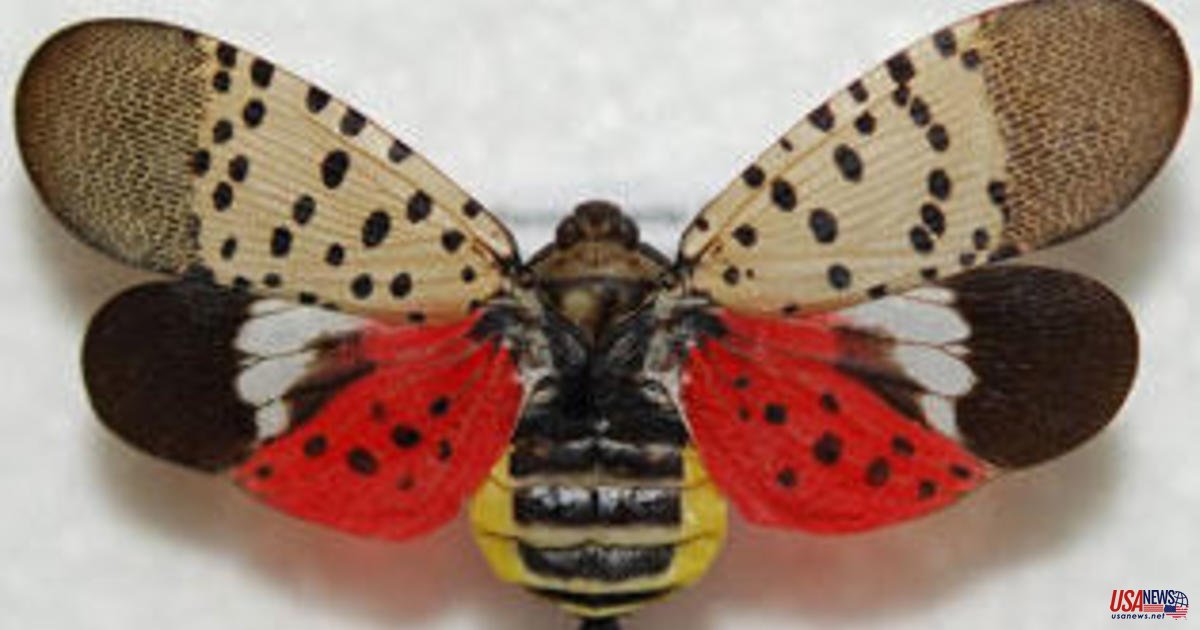North Carolina has discovered a population of an invasive Asian fly for the first time. This confirms a prediction by agricultural experts that the pest could be devastating.
The N.C. Department of Agriculture and Consumer Service reported an infestation of the spotted lamplinfly in Kernersville just east of Winston-Salem. According to N.C. State University's news release, the infestation is located within a 5-mile radius.
The department stated in a press release that they found a heavy infestation of bugs in several locations. This indicates it is an established presence, and not just a single-insect event.
According to the news release, the first sighting in the United States of the spotted lanternfly in the USA was made in Pennsylvania in 2014. It has been discovered in nine additional states in New England and in the Midwest since then. An infestation was discovered near the Virginia-North Carolina border in late 2021.
The spotted lanternfly can infest grapevines and cause damage to vineyards. It eats more than 100 different species of plants, including native and fruit trees, hops, and fruit trees. It also likes to be surrounded by popular plants for landscaping.
The fly population was growing in New York City last summer. The Department of Parks and Recreation asked residents to report any sightings to them.
Rutgers University's Entomology Department chair, Professor George Hamilton, said last year to CBS New York that August is the best month to kill insects because most adults are out. He said that the bugs begin to lay eggs in September and that baby lanternflies can be more difficult to kill and find.
It can also be dangerous for homeowners who may have to pay thousands of dollars to get rid of the pests.
Honeydew, a sticky, sweet substance that falls from the insects' tree sap, is the root of the problem. Honeydew can land on cars, homes, decks, outdoor equipment and other items, such as grills. It is an attractive growth medium for sooty mould, which is an unsightly fungus. Honeydew is attractive to bees as well as wasps. This can cause problems for homeowners.
Experts say that while there is no way to estimate the economic impact on homeowners in the United States, it could be significant. The cost of eliminating the spotted lanternfly from a single property can range between hundreds and thousands of dollars. This is in addition to the projected economic damage from agricultural harm that could reach $300 million in Pennsylvania, according to a 2019 Penn State College of Agricultural Sciences report.
This report was contributed by Li Cohen and Aimee Pichi.













